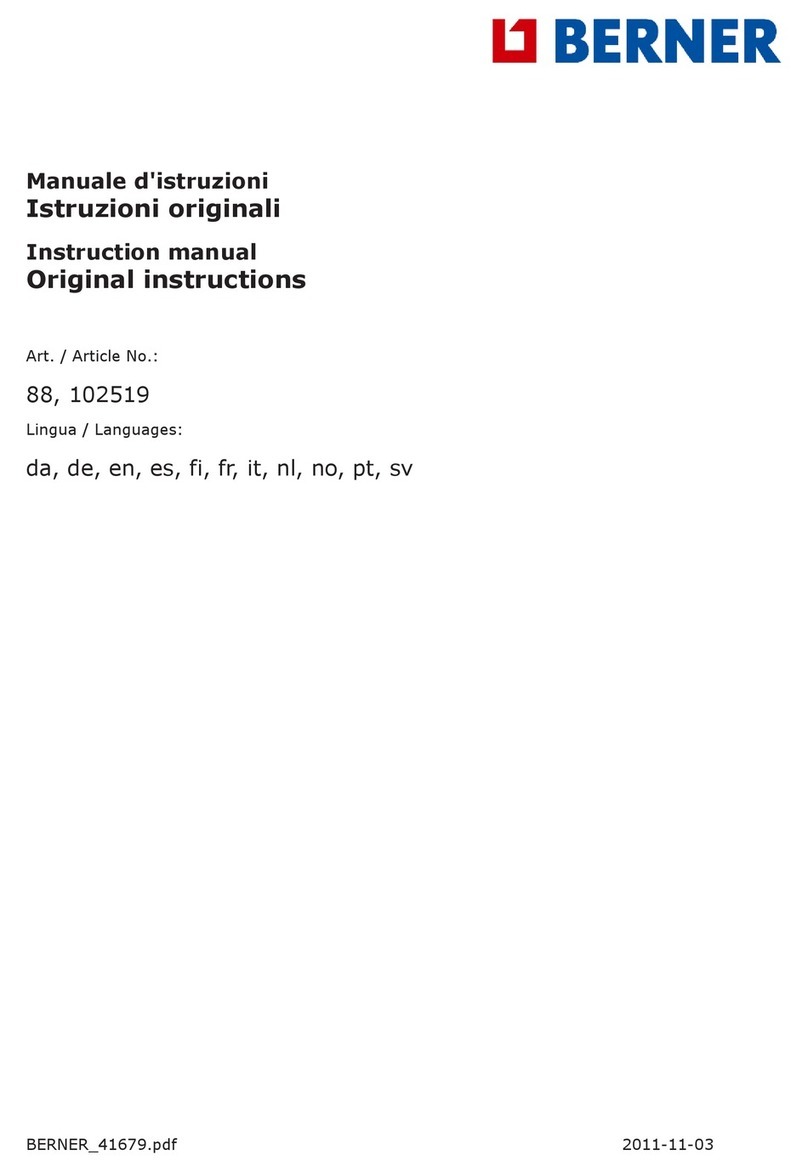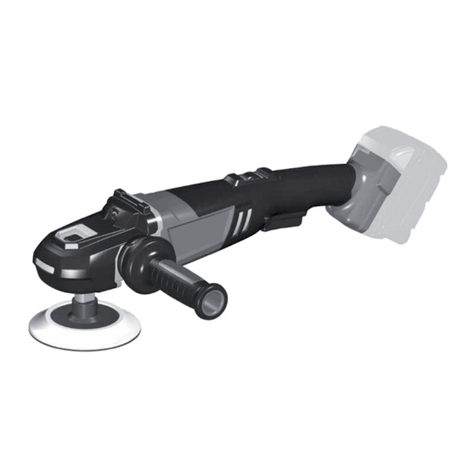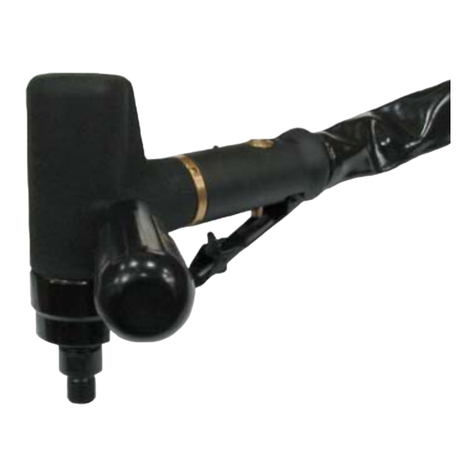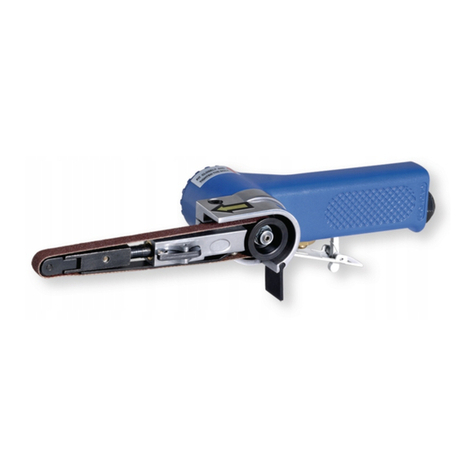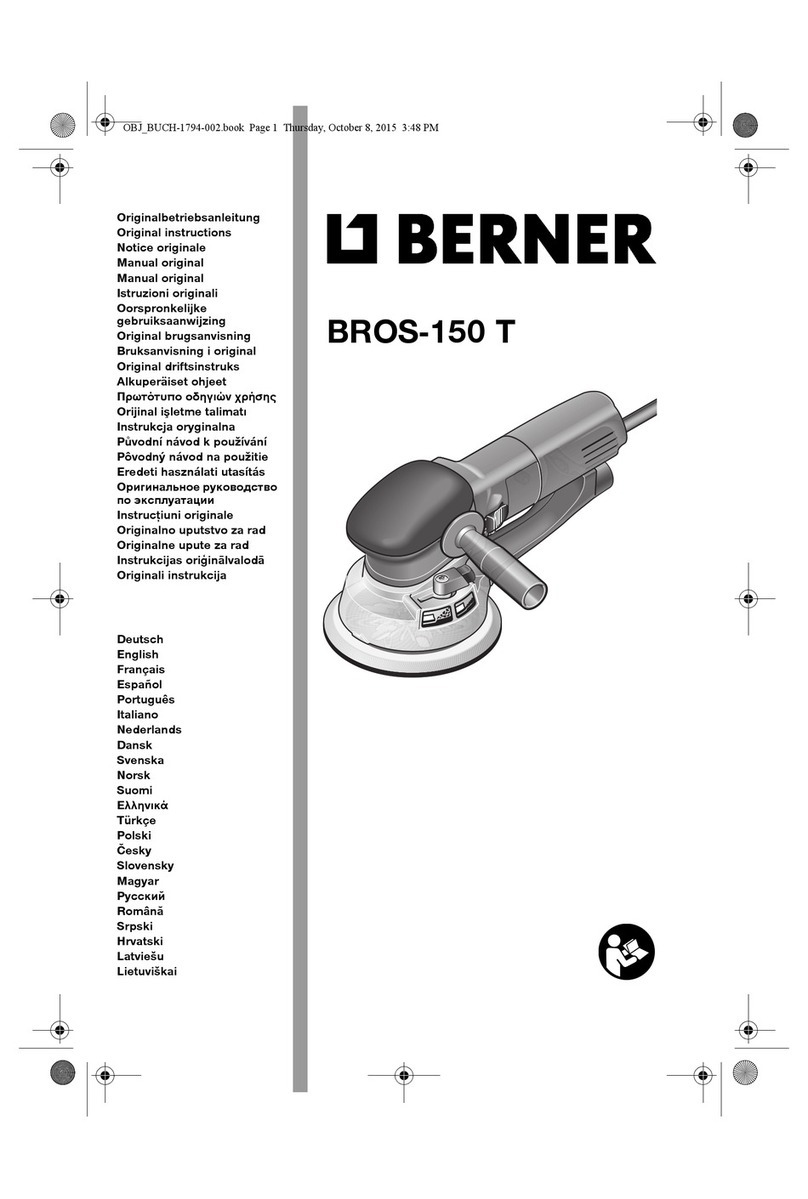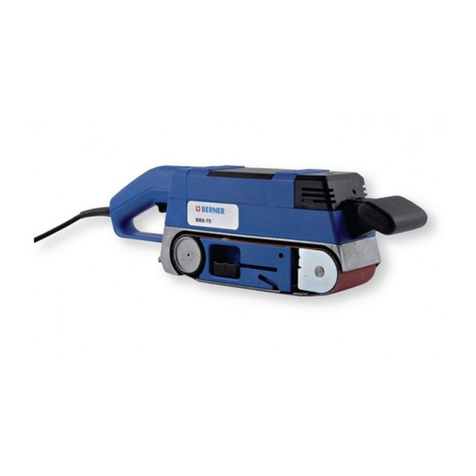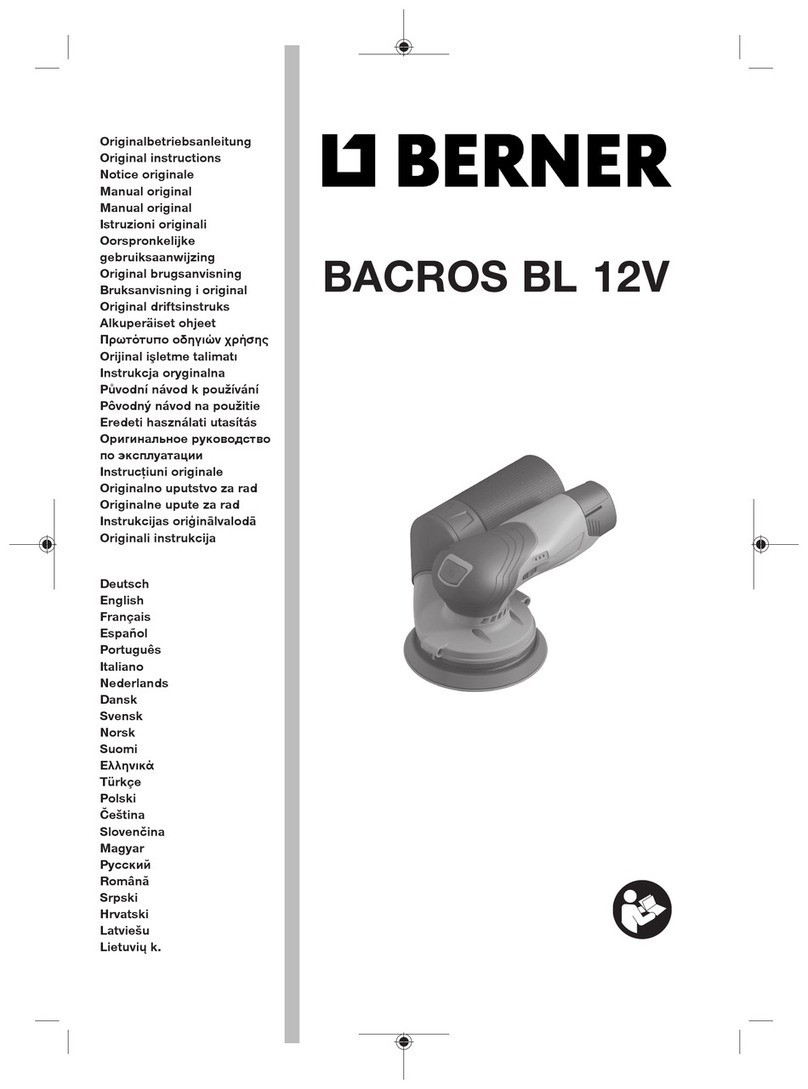
Deutsch–1
3 609 929 A92 • (06.07) T
Lesen Sie alle Sicherheitshin-
weise und Anweisungen. Ver-
säumnisse bei der Einhaltung der
Sicherheitshinweise und Anweisungen können elektri-
schen Schlag, Brand und/oder schwere Verletzungen
verursachen.
Bewahren Sie alle Sicherheitshinweise und An-
weisungen für die Zukunft auf.
Der in den Sicherheitshinweisen verwendete Begriff
„Elektrowerkzeug“ bezieht sich auf netzbetriebene
Elektrowerkzeuge (mit Netzkabel) und auf akkubetrie-
bene Elektrowerkzeuge (ohne Netzkabel).
1) Arbeitsplatzsicherheit
a) Halten Sie Ihren Arbeitsbereich sauber und
gut beleuchtet. Unordnung oder unbeleuchte-
te Arbeitsbereiche können zu Unfällen führen.
b) Arbeiten Sie mit dem Elektrowerkzeug
nicht in explosionsgefährdeter Umgebung,
in der sich brennbare Flüssigkeiten, Gase
oder Stäube befinden. Elektrowerkzeuge er-
zeugen Funken, die den Staub oder die Dämpfe
entzünden können.
c) Halten Sie Kinder und andere Personen
während der Benutzung des Elektrowerk-
zeugs fern. Bei Ablenkung können Sie die Kon-
trolle über das Gerät verlieren.
2) Elektrische Sicherheit
a) Der Anschlussstecker des Elektrowerkzeu-
ges muss in die Steckdose passen. Der Ste-
cker darf in keiner Weise verändert werden.
Verwenden Sie keine Adapterstecker ge-
meinsam mit schutzgeerdeten Elektro-
werkzeugen. Unveränderte Stecker und pas-
sende Steckdosen verringern das Risiko eines
elektrischen Schlages.
b) Vermeiden Sie Körperkontakt mit geerde-
ten Oberflächen wie Rohren, Heizungen,
Herden und Kühlschränken. Es besteht ein
erhöhtes Risiko durch elektrischen Schlag, wenn
Ihr Körper geerdet ist.
c) Halten Sie das Gerät von Regen oder Nässe
fern. Das Eindringen von Wasser in ein Elektro-
werkzeug erhöht das Risiko eines elektrischen
Schlages.
d) Zweckentfremden Sie das Kabel nicht, um
das Elektrowerkzeug zu tragen, aufzuhän-
gen oder um den Stecker aus der Steckdo-
se zu ziehen. Halten Sie das Kabel fern von
Hitze, Öl, scharfen Kanten oder sich bewe-
genden Geräteteilen. Beschädigte oder verwi-
ckelte Kabel erhöhen das Risiko eines elektri-
schen Schlages.
e) Wenn Sie mit einem Elektrowerkzeug im
Freien arbeiten, verwenden Sie nur Verlän-
gerungskabel, die auch für den Außenbe-
reich geeignet sind. Die Anwendung eines für
den Außenbereich geeigneten Verlängerungska-
bels verringert das Risiko eines elektrischen
Schlages.
f) Wenn der Betrieb des Elektrowerkzeuges in
feuchter Umgebung nicht vermeidbar ist,
verwenden Sie einen Fehlerstromschutz-
schalter. Der Einsatz eines Fehlerstromschutz-
schalters vermindert das Risiko eines elektri-
schen Schlages.
3) Sicherheit von Personen
a) Seien Sie aufmerksam, achten Sie darauf,
was Sie tun und gehen Sie mit Vernunft an
die Arbeit mit einem Elektrowerkzeug. Be-
nutzen Sie kein Elektrowerkzeug, wenn Sie
müde sind oder unter dem Einfluss von
Drogen, Alkohol oder Medikamenten ste-
hen. Ein Moment der Unachtsamkeit beim Ge-
brauch des Elektrowerkzeuges kann zu ernst-
haften Verletzungen führen.
b) Tragen Sie persönliche Schutzausrüstung
und immer eine Schutzbrille. Das Tragen per-
sönlicher Schutzausrüstung, wie Staubmaske,
rutschfeste Sicherheitsschuhe, Schutzhelm oder
Gehörschutz, je nach Art und Einsatz des Elek-
trowerkzeuges, verringert das Risiko von Verlet-
zungen.
c) Vermeiden Sie eine unbeabsichtigte Inbe-
triebnahme. Vergewissern Sie sich, dass
das Elektrowerkzeug ausgeschaltet ist, be-
vor Sie es an die Stromversorgung und/
oder den Akku anschließen, es aufnehmen
oder tragen. Wenn Sie beim Tragen des Elek-
trowerkzeuges den Finger am Schalter haben
oder das Gerät eingeschaltet an die Stromver-
sorgung anschließen, kann dies zu Unfällen füh-
ren.
d) Entfernen Sie Einstellwerkzeuge oder
Schraubenschlüssel, bevor Sie das Elektro-
werkzeug einschalten. Ein Werkzeug oder
Schlüssel, der sich in einem drehenden Geräte-
teil befindet, kann zu Verletzungen führen.
e) Vermeiden Sie eine abnormale Körper-
haltung. Sorgen Sie für einen sicheren
Stand und halten Sie jederzeit das Gleich-
gewicht. Dadurch können Sie das Elektrowerk-
zeug in unerwarteten Situationen besser kontrol-
lieren.
f) Tragen Sie geeignete Kleidung. Tragen Sie
keine weite Kleidung oder Schmuck. Halten
Sie Haare, Kleidung und Handschuhe fern
von sich bewegenden Teilen. Lockere Klei-
dung, Schmuck oder lange Haare können von
sich bewegenden Teilen erfasst werden.
Allgemeine Sicherheitshinweise für Elektrowerkzeuge
bros150t_bu_3609929A92_t.fm Seite 1 Montag, 10. Juli 2006 10:00 10
